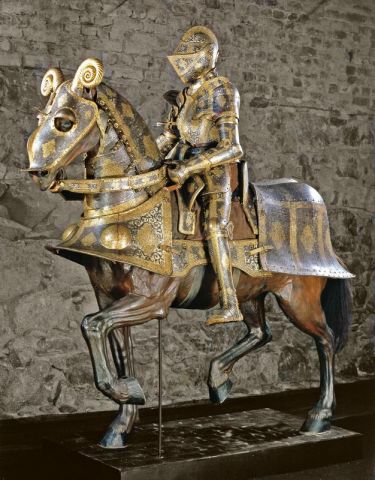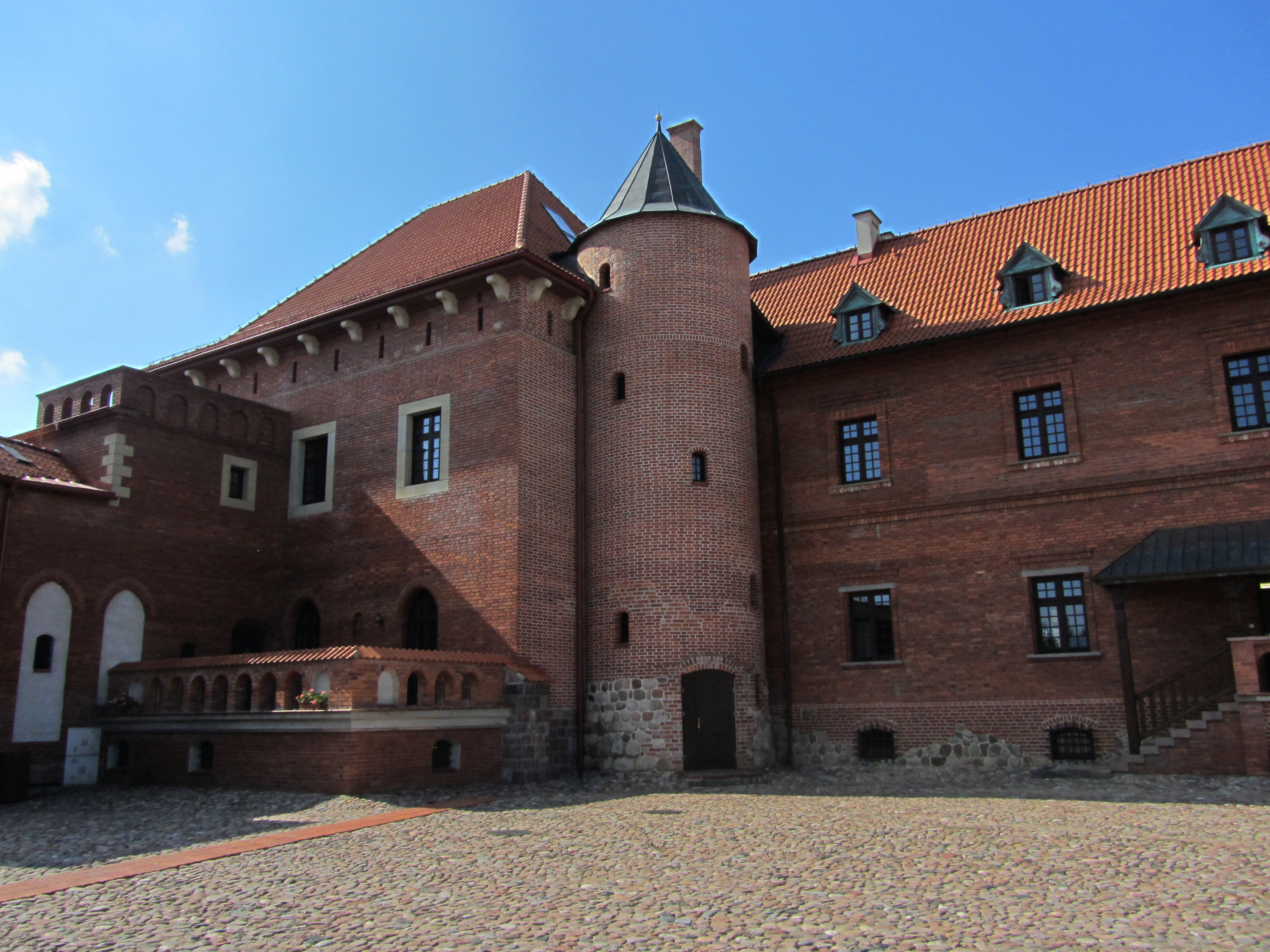Tykocin Castle on:
[Wikipedia]
[Google]
[Amazon]
The Tykocin Royal Castle is a 15th-century castle located on the right bank of the river
 The castle – then located on a border area in the
The castle – then located on a border area in the  Based on the preserved plans of the fortress, found in the archives in
Based on the preserved plans of the fortress, found in the archives in
Zamek w Tykocinie feb 2019.jpg, Reconstructed west wing of the castle.
Tykocin 2010castle fc06.jpg
Tykocin Castle, Poland, June 2020.jpg, Courtyard
2013 Interior of the Castle in Tykocin - restaurant - 12.jpg
Tykocin Plan Zamku.svg
Tykocin 1705.jpg
2013 Interior of the Castle in Tykocin - restaurant - 02.jpg, Castle restaurant
Piwnice zamek w Tykocinie.jpg, Castle cellars
File:Tykocin July 2013 148.JPG,
Narew
The Narew (; be, Нараў, translit=Naraŭ; or ; Sudovian: ''Naura''; Old German: ''Nare''; uk, Нарва, translit=Narva) is a 499-kilometre (310 mi) river primarily in north-eastern Poland, which is also a tributary of the river Vis ...
in Tykocin
Tykocin is a small town in north-eastern Poland, with 2,010 inhabitants (2012), located on the Narew river, in Białystok County in the Podlaskie Voivodeship. It is one of the oldest towns in the region, with its historic center designated a His ...
, Poland. It fell into ruin in the 18th century and its reconstruction began in 2002.
History
 The castle – then located on a border area in the
The castle – then located on a border area in the Grand Duchy of Lithuania
The Grand Duchy of Lithuania was a European state that existed from the 13th century to 1795, when the territory was partitioned among the Russian Empire, the Kingdom of Prussia, and the Habsburg Empire of Austria. The state was founded by Li ...
– was built in 1433 for Lithuanian noble Jonas Goštautas
Jonas Gostautas or Goštautas ( pl, Jan Gasztołd; c. 1383 in Geranainys – 1 September 1458 in Vilnius) was a Lithuanian nobleman from the Grand Duchy of Lithuania of the Gasztołd (Goštautai) noble family, a politician and skillful lan ...
, voivode of Trakai
lt, Trakų vaivadija pl, Województwo trockie
, conventional_long_name = Trakai Voivodeship
, common_name = Trakai
, subdivision = Voivodeship
, nation = Grand Duchy of Lithuania (1413–1569)
Polish–Lithuanian Commonwealth (1569–1795)
, year_ ...
and Vilnius
Vilnius ( , ; see also other names) is the capital and largest city of Lithuania, with a population of 592,389 (according to the state register) or 625,107 (according to the municipality of Vilnius). The population of Vilnius's functional urb ...
, replacing the original wooden fortress. In the 1560s, upon the death of the last member of the Goštautas family the castle became the property of king Sigismund II Augustus
Sigismund II Augustus ( pl, Zygmunt II August, lt, Žygimantas Augustas; 1 August 1520 – 7 July 1572) was King of Poland and Grand Duke of Lithuania, the son of Sigismund I the Old, whom Sigismund II succeeded in 1548. He was the first ruler ...
, who expanded it. The construction was supervised by Hiob Bretfus, military engineer and royal architect. During the reign of Sigismund Augustus the structure served as a royal residence with an impressive treasury and library as well as the main arsenal of the crown. In 1611–1632 the castle was rebuilt again and surrounded with bastion
A bastion or bulwark is a structure projecting outward from the curtain wall of a fortification, most commonly angular in shape and positioned at the corners of the fort. The fully developed bastion consists of two faces and two flanks, with fi ...
fortifications by Krzysztof Wiesiołowski
Krzysztof Wiesiołowski (died 1637) was a Polish nobleman, starost of Tykocin and Supraśl, Stolnik of Lithuania and Ciwun of Wilno before 1620, Court Marshal of Lithuania from 1619, Krajczy of Lithuania from 1620, and Grand Marshal of Lithua ...
, starosta
The starosta or starost (Cyrillic: ''старост/а'', Latin: ''capitaneus'', german: link=no, Starost, Hauptmann) is a term of Slavic origin denoting a community elder whose role was to administer the assets of a clan or family estates. Th ...
of Tykocin.
During the 1655 Deluge
A deluge is a large downpour of rain, often a flood.
The Deluge refers to the flood narrative in the Biblical book of Genesis.
Deluge may also refer to:
History
*Deluge (history), the Swedish and Russian invasion of the Polish-Lithuanian Comm ...
, the Radziwiłł army occupied the castle. On 31 December, 1655, when the castle was besieged by troops of the Tyszowce Confederation
The Tyszowce Confederation (Poland), Confederation (in Polish language, Polish ''Konfederacja tyszowiecka'') was set up by the Polish army under the command of Great Crown Hetman Stanisław Rewera Potocki and Field Crown Hetman Stanisław Lanckor ...
, Janusz Radziwiłł, one of the most powerful people in the Polish–Lithuanian Commonwealth
The Polish–Lithuanian Commonwealth, formally known as the Kingdom of Poland and the Grand Duchy of Lithuania, and, after 1791, as the Commonwealth of Poland, was a bi-confederal state, sometimes called a federation, of Crown of the Kingdom of ...
considered by some as the traitor, died here. Ultimately, the castle was captured on 27 January, 1657.
In the following years the castle and surrounding lands were donated to Stefan Czarniecki
Stefan Czarniecki (Polish: of the Łodzia coat of arms, 1599 – 16 February 1665) was a Polish nobleman, general and military commander. In his career, he rose from a petty nobleman to a magnate holding one of the highest offices in the Commo ...
in reward for his contribution in the war. The new owner rebuilt the castle after 1698. In November 1705 the meeting between the king Augustus II the Strong
Augustus II; german: August der Starke; lt, Augustas II; in Saxony also known as Frederick Augustus I – Friedrich August I (12 May 16701 February 1733), most commonly known as Augustus the Strong, was Elector of Saxony from 1694 as well as Ki ...
and Peter the Great
Peter I ( – ), most commonly known as Peter the Great,) or Pyotr Alekséyevich ( rus, Пётр Алексе́евич, p=ˈpʲɵtr ɐlʲɪˈksʲejɪvʲɪtɕ, , group=pron was a Russian monarch who ruled the Tsardom of Russia from t ...
took place here. During this meeting the Order of White Eagle was established by the King of Poland
Poland was ruled at various times either by dukes and princes (10th to 14th centuries) or by kings (11th to 18th centuries). During the latter period, a tradition of free election of monarchs made it a uniquely electable position in Europe (16t ...
.
In 1734 the castle was destroyed by fire. Since that time, no inhabited building began to fall into disrepair. In 1771 remains of the castle were destroyed by flood and in 1914, during World War I, the material from the remaining walls was used by the German soldiers to build roads.
Saint Petersburg
Saint Petersburg ( rus, links=no, Санкт-Петербург, a=Ru-Sankt Peterburg Leningrad Petrograd Piter.ogg, r=Sankt-Peterburg, p=ˈsankt pʲɪtʲɪrˈburk), formerly known as Petrograd (1914–1924) and later Leningrad (1924–1991), i ...
, the residential part of the castle has been restored (west wing in the style of late Gothic
Gothic or Gothics may refer to:
People and languages
*Goths or Gothic people, the ethnonym of a group of East Germanic tribes
**Gothic language, an extinct East Germanic language spoken by the Goths
**Crimean Gothic, the Gothic language spoken b ...
). The original castle was built on a plan of a trapezoid
A quadrilateral with at least one pair of parallel sides is called a trapezoid () in American and Canadian English. In British and other forms of English, it is called a trapezium ().
A trapezoid is necessarily a Convex polygon, convex quadri ...
with a courtyard and four cylindrical towers at the corners. The complex was surrounded with fortifications – curtains combined four terrestrial inner bastions.
Treasury
In about 1565 the king Sigismund Augustus installed at the castle his private treasury and a collection of books, initially stored at the Vilnius Castle. Sigismund Augustus was a passionate collector of jewels. According tonuncio
An apostolic nuncio ( la, nuntius apostolicus; also known as a papal nuncio or simply as a nuncio) is an ecclesiastical diplomat, serving as an envoy or a permanent diplomatic representative of the Holy See to a state or to an international or ...
Bernardo Bongiovanni's relation, his collection was allocated in 16 chests. Among the precious items in his possession was Charles V Charles V may refer to:
* Charles V, Holy Roman Emperor (1500–1558)
* Charles V of Naples (1661–1700), better known as Charles II of Spain
* Charles V of France (1338–1380), called the Wise
* Charles V, Duke of Lorraine (1643–1690)
* Infan ...
's ruby of 80 000 scudos' worth, as well as the Emperor's diamond medal with Habsburgs
The House of Habsburg (), alternatively spelled Hapsburg in Englishgerman: Haus Habsburg, ; es, Casa de Habsburgo; hu, Habsburg család, it, Casa di Asburgo, nl, Huis van Habsburg, pl, dom Habsburgów, pt, Casa de Habsburgo, la, Domus Hab ...
Eagle on one side and two columns with a sign ''Plus Ultra
''Plus ultra'' (, , en, "Further beyond") is a Latin phrase and the national motto of Spain. A reversal of the original phrase ''non plus ultra'' ("Nothing further beyond"), said to have been inscribed as a warning on the Pillars of Herc ...
'' on the other side. He had also a sultan
Sultan (; ar, سلطان ', ) is a position with several historical meanings. Originally, it was an Arabic abstract noun meaning "strength", "authority", "rulership", derived from the verbal noun ', meaning "authority" or "power". Later, it ...
's sword of 16 000 ducat
The ducat () coin was used as a trade coin in Europe from the later Middle Ages from the 13th to 19th centuries. Its most familiar version, the gold ducat or sequin containing around of 98.6% fine gold, originated in Venice in 1284 and gained wi ...
s' worth, 30 precious horse trappings and 20 different private-use armour
Armour (British English) or armor (American English; see spelling differences) is a covering used to protect an object, individual, or vehicle from physical injury or damage, especially direct contact weapons or projectiles during combat, or fr ...
s. The papal nuncio wrote in his diary ''I also saw twenty suits of royal armour of which four were of most wondrous workmanship, namely with a beautiful sculpture and figures set with silver ..It cost six thousand scudos''. The king's possession included a rich collection of tapestries (360 pieces), commissioned by him in Brussels
Brussels (french: Bruxelles or ; nl, Brussel ), officially the Brussels-Capital Region (All text and all but one graphic show the English name as Brussels-Capital Region.) (french: link=no, Région de Bruxelles-Capitale; nl, link=no, Bruss ...
in the years 1550–1560, which decorated the castle's walls. The king's treasures were scattered after his death.
Gallery
Hussar
A hussar ( , ; hu, huszár, pl, husarz, sh, husar / ) was a member of a class of light cavalry, originating in Central Europe during the 15th and 16th centuries. The title and distinctive dress of these horsemen were subsequently widely ...
armour
File:2013 The cellars of the castle in Tykocin (museum) - 25.jpg
File:Round shot cannonbal Tykocin.jpg, Cannonbals
Tykocin July 2013 159.JPG
See also
*List of castles in Poland
Below is the list of castles in Poland in alphabetical order, based on similar lists compiled by various sight-seeing societies.History of the Tykocin Castle
*
{{DEFAULTSORT:Tykocin Castle Castles in Podlaskie Voivodeship Residences of Polish monarchs Royal residences in Poland Castles of the Grand Duchy of Lithuania
*
{{DEFAULTSORT:Tykocin Castle Castles in Podlaskie Voivodeship Residences of Polish monarchs Royal residences in Poland Castles of the Grand Duchy of Lithuania